Thingiverse
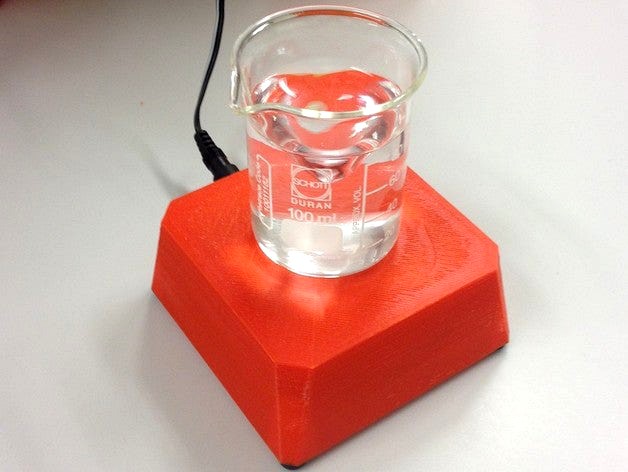
Magnetic stirrer from a 80 mm fan by WaveSupportApparatus
by Thingiverse
Last crawled date: 3 years ago
I needed to keep a solution of Chelex constantly stirring so that the beads wouldn't just sink to the bottom during pipetting. I could move equipment around the lab, or move my work to the equipment — OOOOOR I could make my own personal stirrer so that I never have to share equipment with anyone! I like that.
A demonstration video of this mixer is here.
This mixer is made using a standard 80 mm computer fan hooked up to a multi-voltage power adaptor, which is how you control the mixer's speed. I designed it so that the magnets would be as close to the platform's surface as possible, which keeps the stirring bar stable when you're mixing larger volumes at higher speeds, or mixing viscous liquids (like vape juice, apparently). Heck, put a stirring bar into your bubble tea and keep your bubbles well-distributed, whatever you like!
Bill of Materials
Tools
A long-stemmed screwdriver that can fit through the fan's mounting holes
Hot glue gun
Mallet
Magnetic stir bar (or a screw or nail or any other magnetic object depending on your needs)
Printed components
1 × stirrer enclosure.stl
1 × stirrer magnet mount.stl
Electronics
1 × 80 mm computer fan
4 × standard PC fan screw
1 × 3.5 mm female jack (AliExpress Example 1 or Example 2)
1 × multi-voltage power adapter (mine delivers 3–12 V with a maximum of 800 mA).
Vitamins
4 × self-adhesive rubber feet (AliExpress)
2 × neodymium magnets, 8 × 5 mm (OD × H) (AliExpress)
(Optional) Reusable double-sided mounting tape, e.g. Scotch restickable strips
Assembly
Something you should know: You can release a hot glue joint by soaking it with rubbing alcohol for a few seconds.
Hold both ends of your stir bar to a magnet to find the polarity of each end.
Surprisingly, my own stir bars had the same polarity at both ends, even though every other magnetic stirrer design on Thingiverse (and common sense) assumes opposite polarities.
Friction-fit the neodymium magnets into the holes of the magnet mount, remembering the polarity you found in Step 1.
Check this against your stir bar before you continue. Your stir bar should be tightly held down by both magnets, not just one end held down and the other end flopping free and being repelled by the other magnet.
If you get the polarity of these magnets wrong, your stir bar will be dragged in a big circle around the outside of the mixing vessel instead of spinning in place in the center.
Affix the magnets into the mounting holes by using super glue or a tiny dab of hot glue. Tap them down with a mallet to ensure they are seated properly.
Place a few dabs of hot glue on the flat side of the magnet mount, and then attach it to the central hub of the fan (the bit that rotates with the blades, not the reverse side which has a sticker that covers the wires).
There is always a dimple or tooling mark exactly at the center of the fan's hub. When you can see the tooling mark through the hole in the magnet mount, you are centered!
Don't use too much hot glue. Four dots distributed around the magnet mount, that's all you need.
Screw the fan (magnet side up) into the mounting holes on the underside of the mixing enclosure.
Wire the fan to the 3.5 mm female jack (see photo).
Ignore the fan's yellow wire.
Positive/negative doesn't really matter, because you can reverse the polarity of the power supply by reversing its removable male plug.
Attach a 3.5 mm male plug to the multi-voltage power supply and plug it in.
If the fan doesn't start turning, reverse the 3.5 mm male plug to swap the polarity and try again.
Hot glue all the dangling wires and things together, and attach the rubber feet to the flat pads of the enclosure.
Notes for using this stirrer
If you place a thin-bottomed vessel (like a small beaker) onto the mixing platform, you may find that the stirrer doesn't move until you turn the voltage way up. This is because I designed the magnets to be as close as possible to the platform's surface; the magnets are therefore so close to the stir bar that it's being pulled hard against the bottom of the vessel. This is a boon for thick-bottomed vessels like large Schott bottles, but not always ideal for everything else. The solution is to put the thin-bottomed vessel on a platform. In one of the example photos above, I use a thick petri dish as my platform. I have also used a pad of post-its and a protocol from a kit; you only need to raise the vessel a few millimetres until the magnetic force weakens enough.
I sometimes mix stuff in small 70 mL yellow-topped specimen bottles. These bottles are light, so they need to be held down somehow during mixing. The best solution I've found is to put reusable double-sided mounting strips onto the mixing platform. When they begin losing their stickiness, they can be washed in soapy water to bring it back.
A demonstration video of this mixer is here.
This mixer is made using a standard 80 mm computer fan hooked up to a multi-voltage power adaptor, which is how you control the mixer's speed. I designed it so that the magnets would be as close to the platform's surface as possible, which keeps the stirring bar stable when you're mixing larger volumes at higher speeds, or mixing viscous liquids (like vape juice, apparently). Heck, put a stirring bar into your bubble tea and keep your bubbles well-distributed, whatever you like!
Bill of Materials
Tools
A long-stemmed screwdriver that can fit through the fan's mounting holes
Hot glue gun
Mallet
Magnetic stir bar (or a screw or nail or any other magnetic object depending on your needs)
Printed components
1 × stirrer enclosure.stl
1 × stirrer magnet mount.stl
Electronics
1 × 80 mm computer fan
4 × standard PC fan screw
1 × 3.5 mm female jack (AliExpress Example 1 or Example 2)
1 × multi-voltage power adapter (mine delivers 3–12 V with a maximum of 800 mA).
Vitamins
4 × self-adhesive rubber feet (AliExpress)
2 × neodymium magnets, 8 × 5 mm (OD × H) (AliExpress)
(Optional) Reusable double-sided mounting tape, e.g. Scotch restickable strips
Assembly
Something you should know: You can release a hot glue joint by soaking it with rubbing alcohol for a few seconds.
Hold both ends of your stir bar to a magnet to find the polarity of each end.
Surprisingly, my own stir bars had the same polarity at both ends, even though every other magnetic stirrer design on Thingiverse (and common sense) assumes opposite polarities.
Friction-fit the neodymium magnets into the holes of the magnet mount, remembering the polarity you found in Step 1.
Check this against your stir bar before you continue. Your stir bar should be tightly held down by both magnets, not just one end held down and the other end flopping free and being repelled by the other magnet.
If you get the polarity of these magnets wrong, your stir bar will be dragged in a big circle around the outside of the mixing vessel instead of spinning in place in the center.
Affix the magnets into the mounting holes by using super glue or a tiny dab of hot glue. Tap them down with a mallet to ensure they are seated properly.
Place a few dabs of hot glue on the flat side of the magnet mount, and then attach it to the central hub of the fan (the bit that rotates with the blades, not the reverse side which has a sticker that covers the wires).
There is always a dimple or tooling mark exactly at the center of the fan's hub. When you can see the tooling mark through the hole in the magnet mount, you are centered!
Don't use too much hot glue. Four dots distributed around the magnet mount, that's all you need.
Screw the fan (magnet side up) into the mounting holes on the underside of the mixing enclosure.
Wire the fan to the 3.5 mm female jack (see photo).
Ignore the fan's yellow wire.
Positive/negative doesn't really matter, because you can reverse the polarity of the power supply by reversing its removable male plug.
Attach a 3.5 mm male plug to the multi-voltage power supply and plug it in.
If the fan doesn't start turning, reverse the 3.5 mm male plug to swap the polarity and try again.
Hot glue all the dangling wires and things together, and attach the rubber feet to the flat pads of the enclosure.
Notes for using this stirrer
If you place a thin-bottomed vessel (like a small beaker) onto the mixing platform, you may find that the stirrer doesn't move until you turn the voltage way up. This is because I designed the magnets to be as close as possible to the platform's surface; the magnets are therefore so close to the stir bar that it's being pulled hard against the bottom of the vessel. This is a boon for thick-bottomed vessels like large Schott bottles, but not always ideal for everything else. The solution is to put the thin-bottomed vessel on a platform. In one of the example photos above, I use a thick petri dish as my platform. I have also used a pad of post-its and a protocol from a kit; you only need to raise the vessel a few millimetres until the magnetic force weakens enough.
I sometimes mix stuff in small 70 mL yellow-topped specimen bottles. These bottles are light, so they need to be held down somehow during mixing. The best solution I've found is to put reusable double-sided mounting strips onto the mixing platform. When they begin losing their stickiness, they can be washed in soapy water to bring it back.
Similar models
grabcad
free

Magnetic stirrer
...ield may be created either by a rotating magnet or a set of stationary electromagnets, placed beneath the vessel with the liquid.
thingiverse
free

120mm Fan Magnetic Stir Bar Bracket by Brettarm
...
thingiverse
120mm fan magnetic stir bar bracket
you will need:
1 x 7 blade 120mm fan
2 x 9mm cube magnet
1 x 70mm long stir bar
thingiverse
free

Resin wash station platform for magnetic stirrer. by mikel0142
...m/gp/product/b06wd1f7hd/
i would recommend printing in something that is resistant to isopropyl or whatever you are rinsing with.
thingiverse
free

Magnetic Stirrer + Stir Bar by ProgressTH
...or (2x) 6x4mm nickle plated neodymium magnets and;
new cover that allows for easier removal when the power adapter is plugged in.
grabcad
free

Stirrer Case Bottom
...stirrer case bottom
grabcad
laser stir bar case bottom
thingiverse
free

Fan Shroud for Turnigy Fabrikator 3D + metal hot end by joop1987
...ront. it uses the original mounting screw holes. the bottom plate doesn't let air on the nozzle and won't cool off abs.
thingiverse
free

Magnetic Stirrer
...agnets x 2pmw dc motor speed controller x 1panel mounting dc power jack x1
andptfe magnetic stirrer mixer stir bar spinbar set x1
thingiverse
free

E3D V5 Hot End Fan Mount & Integrated cooler by selimoztunc
...to be used with e3d v5 hot end or similar hot end...
thingiverse
free

Simple stir plate by heybeerman04
...e but it's pretty simple. you may have to resize based on the fan you use because the lip has to sit just above the magnets.
thingiverse
free

Fabrikator extra fan clip for E3D hot end by chrishornby
...if you have fitted an e3d hot end (or similar you can remount the fabrikator part fan using this...
Wavesupportapparatus
thingiverse
free
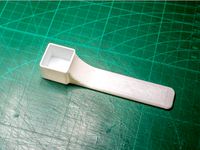
Metamucil measuring scoop by WaveSupportApparatus
...ry fibre supplement, equivalent to about 6 grams. scoop up a bunch of metamucil powder, level off the scoop, and you're done!
thingiverse
free
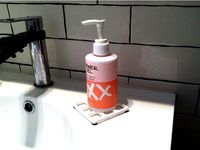
Drying tray by WaveSupportApparatus
...and adds more cleaning work for you later. print this drying tray and stick some rubber feet onto it, and this problem is solved!
thingiverse
free
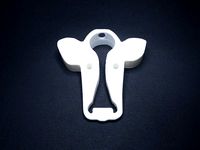
Cow face doorstop by WaveSupportApparatus
...d by gayatri for the noun project.
its dimensions are 70 × 70 × 20 mm, or very approximately 2¾ × 2¾ × ¾ inches in ye olde unitſ.
thingiverse
free

TEST - The generalised test object by WaveSupportApparatus
...ppearance and bonding.
flow rate calibration (read this procedure).
visualise ringing/vibration inherent to the x, y, and z axes.
thingiverse
free
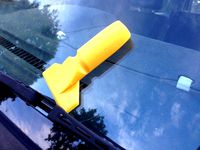
Stub-handled ice scraper by WaveSupportApparatus
... you might hold a screwdriver, or you can hold it with your fingertips inside the hollow and the base of the handle in your palm.
thingiverse
free
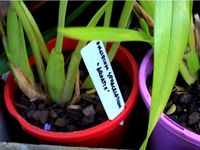
Plant label (120 × 25 × 0.60 mm) by WaveSupportApparatus
...esupportapparatus
thingiverse
a large plant tag measuring 120 × 25 × 0.60 mm (l×w×d). can fit into the label slots of most pots.
thingiverse
free
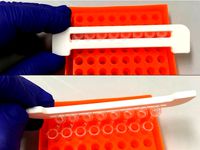
8-strip PCR tube opener by WaveSupportApparatus
...r strips quickly (both domed- and flat-top tubes).
if you want to open rows of larger tubes, look at kailun's multi-decapper.
thingiverse
free

4-way wire connector (2 mm hanger wire) by WaveSupportApparatus
... by wavesupportapparatus
thingiverse
90° connector for connecting hanger wires (2 mm od). use super glue to reinforce the joint.
thingiverse
free

Dimensional test print by WaveSupportApparatus
....
dimensional accuracy is less important than getting enough plastic down. calibrate your flow rate correctly to figure this out.
thingiverse
free

Leitz Wetzlar Periplan NF 10x eyepiece cover by WaveSupportApparatus
...periplan nf 10x eyepiece to protect it from dust and damage. the cover positively snaps onto the eyepiece with very little force.
Stirrer
turbosquid
$5

French Press with 2 Mugs and Stirrer
... available on turbo squid, the world's leading provider of digital 3d models for visualization, films, television, and games.
3d_export
$125

coffee cup lid paper package sachet foil bag stirrer
...normal (directx)<br>geometry:<br>- units: centimeters<br>- ngons: 0<br>- vertex with more than 5 edges: 0
3d_export
$12

wooden coffee stirrers package set
...; x 7.15" x 1.04"<br>- model parts: 2<br>- material count: 2<br>- xform: yes<br>- boxtrick: yes
3d_export
$19

paper coffee cup with lid sugar package wooden stirrer
...; x 7.08" x 4.34"<br>- model parts: 4<br>- material count: 4<br>- xform: yes<br>- boxtrick: yes
3d_export
$90

distillery equipment
...of glasses<br>six test tubes in various sizes<br>various straws and stirrer<br>rubber tubing<br>various metal stands for the schlenks and retorts<br>one cup<br>and...
3dfindit
free

Hydraulic stirrers
...hydraulic stirrers
3dfind.it
catalog: arag
thingiverse
free

Stirrer/Mixer by JetEn
... up etching pcbs by mixing liquid at low speed.
how it work ? a pcb lies on the bottom of the tank and the stirrer works over it.
thingiverse
free

Epoxy Stirrers by JohnDoe_1
...epoxy stirrers by johndoe_1
thingiverse
never liked the popsicle stick stirrers.
these give me finer control.
thingiverse
free

Coffee Stirrer Holder by Mach3tte
...coffee stirrer holder by mach3tte
thingiverse
coffee stirrer holder.
thingiverse
free

Gibraltar Cocktail Stirrer by cmonkey
...gibraltar cocktail stirrer by cmonkey
thingiverse
a cocktail stirrer modelled after the flag of gibraltar.
Magnetic
3d_ocean
$2

Magnet
...magnet 3docean 3d 3ds max electric magnet magnetic magnetism max model polygon realistic tesla magnet created in...
turbosquid
$6

Magnet
...
turbosquid
royalty free 3d model magnet for download as obj on turbosquid: 3d models for games, architecture, videos. (1548733)
turbosquid
$6

magnet
...uid
royalty free 3d model magnet for download as 3dm and max on turbosquid: 3d models for games, architecture, videos. (1670606)
turbosquid
$1

Magnet
...y free 3d model magnet for download as 3ds, max, obj, and fbx on turbosquid: 3d models for games, architecture, videos. (1215037)
turbosquid
$7

Magnet
...agnet for download as blend, unitypackage, fbx, gltf, and obj on turbosquid: 3d models for games, architecture, videos. (1576588)
3d_export
$5

magnetic knife holder
...magnetic knife holder
3dexport
ordinary magnetic knife holder
archive3d
free
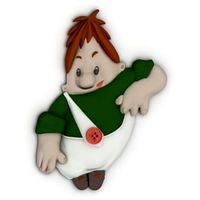
Fridge magnet 3D Model
...3d model archive3d refrigerator magnet fridge magnet magnet toy magnetic s n280712 - 3d model (*.3ds) for interior 3d...
turbosquid
$35

Magnetic butterflies
...alty free 3d model magnetic butterflies for download as blend on turbosquid: 3d models for games, architecture, videos. (1315792)
turbosquid
$2
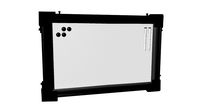
Magnetic Board
...quid
royalty free 3d model magnetic board for download as ma on turbosquid: 3d models for games, architecture, videos. (1264141)
turbosquid
$977

Magnetic Lego
...oyalty free 3d model magnetic lego for download as ma and obj on turbosquid: 3d models for games, architecture, videos. (1142761)
80
turbosquid
$35

80
... available on turbo squid, the world's leading provider of digital 3d models for visualization, films, television, and games.
3ddd
$1
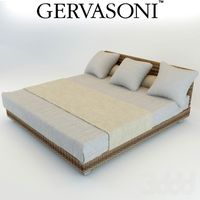
Net 80
...net 80
3ddd
gervasoni
кровать net 80 от gervasoni.
3ddd
$1
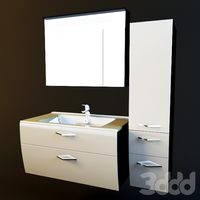
Opadiris Диамант 80
...opadiris диамант 80
3ddd
opadiris , диамант 80
opadiris диамант 80
design_connected
$20
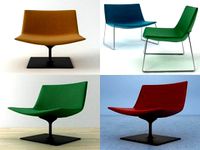
Catifa 80
...catifa 80
designconnected
arper catifa 80 armchairs computer generated 3d model. designed by alberto lievore.
design_connected
$11

PH 80
...ph 80
designconnected
louis poulsen ph 80 computer generated 3d model. designed by henningsen, poul.
3ddd
$1
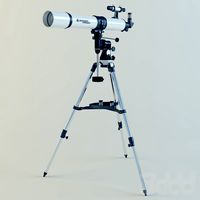
BRESSER Messier R-80 80/900
...essier r-80 80/900 - это телескоп-рефракторhttp://www.bresser-russia.ru/products/bresser_r_80/ polys 1327 692211 деталей
design_connected
$13
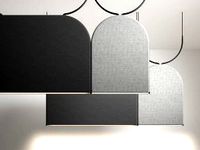
Block 80
...block 80
designconnected
zero lighting block 80 computer generated 3d model. designed by backman, johanna jacobson.
3ddd
$1

Valente Empire 80
...valente empire 80
3ddd
valente
valente empire 80
3d_export
$5

dresser milano 80
...dresser milano 80
3dexport
dresser milano 80 kare design
turbosquid
$7

door drewprom lch 80, lch 80-P
...r drewprom lch 80, lch 80-p for download as max, obj, and fbx on turbosquid: 3d models for games, architecture, videos. (1154736)
Fan
3d_export
$5
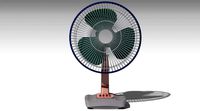
fan
...fan
3dexport
fan 3d model, table fan, fan, electric fan, ventilator
archibase_planet
free

Fan
...fan
archibase planet
fan large fan
fan out n260707 - 3d model for interior 3d visualization.
archibase_planet
free
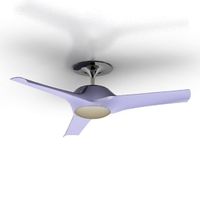
Fan
...fan
archibase planet
fan ceiling fan ventilator
fan stealth n300615 - 3d model (*.gsm+*.3ds) for interior 3d visualization.
3d_export
$15

fan
...fan
3dexport
is an ancient fan
3ddd
$1

Fan-C-Fan by marco gallegos
...n-c-fan by marco gallegos
3ddd
вентилятор , marco gallegos
fan-c-fan by marco gallegos
3d_export
$10

fan
...fan
3dexport
a detailed fan designed for home or space blowing is now available for only 19.99!
turbosquid
$1

Fan
...fan
turbosquid
free 3d model fan for download as on turbosquid: 3d models for games, architecture, videos. (1427865)
turbosquid
$14
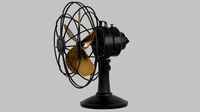
Fan
...fan
turbosquid
royalty free 3d model fan for download as on turbosquid: 3d models for games, architecture, videos. (1415642)
3ddd
$1
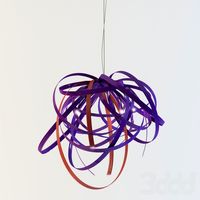
Светильник Fan
...светильник fan
3ddd
fan , italamp
светильник fan, производитель italamp
turbosquid
$25
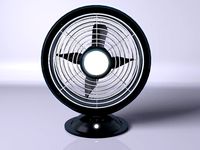
Fan
...fan
turbosquid
royalty free 3d model fan for download as c4d on turbosquid: 3d models for games, architecture, videos. (1483246)
Mm
3ddd
$1

MM Lampadari
...mm lampadari
3ddd
mm lampadari
mm lampadari
бра
люстра
3ddd
$1

MM lampadari
...mm lampadari
3ddd
mm lampadari
lampa mm lampadari,art.
3ddd
$1

MM lampadari
...mm lampadari
3ddd
mm lampadari
lustra mm lampadari,art.
3ddd
free

MM lampadari
...mm lampadari
3ddd
mm lampadari
bra mm lampadari,art.
3ddd
$1

MM Lampadari
...mm lampadari
3ddd
mm lampadari
люстра от фабрики mm lamparadi.арт:7032/8 размеры:а (d 72 x h37 см)
3ddd
$1

MM Lampadari
...mm lampadari
3ddd
lampadari
mm lampadari, 5972/12+6 1700x1800h
3ddd
$1

MM Lampadari
...mm lampadari
3ddd
mm lampadari
настольная лампа (высота - 52 см)
3ddd
$1

MM Lampadari
...mm lampadari
3ddd
mm lampadari
бра от фабрики mm lamparadi.арт:. 7032/a1 размеры:(l 16 x h 27 x sp 27 см)
3ddd
$1

MM Lampadari
...mm lampadari
3ddd
mm lampadari
люстра с рассеивателем из стекла
и позолоты и металлической арматурой
3ddd
$1

MM LAMPADARI 6578
...mm lampadari 6578
3ddd
mm lampadari
торшер mm lampadari 6578/lt3+1 v2172
